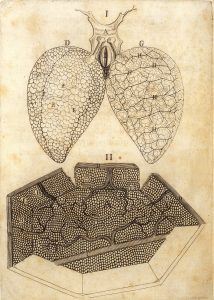Born in 1628 in Crevalcore, Marcello Malpighi deserves a special mention in the history of cardiology. Although the heart and the circulation did not constitute supporting elements in his study, many of his discoveries had an important influence on cardiological thinking and his method was characterized by being truly scientific, in an age when this was a rarity. After some studies in rhetoric and grammar carried out in his hometown, Malpighi went to Bologna at the age of 17 to study philosophy.
Very important for his training was Natali, his teacher, who directe Malpighi to study medicine, which he began in 1651. In a short time, he was introduced into the group of nine students who at the time studied intensively with Bartolomeo Massari, master of the medical discipline in Bologna. Mapighi dedicated himself to important studies of anatomy, vivisections of animals and dissections of cadavers. Among the various themes of the group’s research there was also blood circulation. After graduation, he began medical practice and became friends with Gian Alfonso Borelli, founder of the iatrophisycal and iatromechanical school, which – according to experts in the history of medicine – was a particularly important figure for Malpighi and that led him to work with the scientific precision that distinguishes all his work, far from the empiricism of those years.
Throughout the rich anatomical work of Malpighi there are several important contributions to cardiac and cardio-circulatory knowledge. He was responsible for the discovery of the capillaries, which took place during the studies of the lung structure, which was fully integrated into the new discipline dedicated to the study of blood circulation. To complete his studies, he constantly used the microscope, at a time when the use of this instrument was challenged by the most authoritative anatomists. He also continued to study the circulatory system, making microscopic observations of the blood flow in the viscera of the frog. He was an active defender of Harvey’s theories, against the retrograde ideas of Giuseppe Massari. Two fundamental works by Malpighi entitled De Pulmonibus Observationes Anatomicae (1661) originated as letters that he sent to his former teacher Borelli, in which he minutely described the microanatomy and the capillary circulation of the frog’s lungs. These two missives contained the definitive proof of the existence of a continuity between arteries and veins and confirmed what had previously only been postulated by Harvey in his De Motu Cordis et Sanguinis in Animalibus (1628).

Credit: Wellcome Library,London.
Another important contribution to cardiovascular anatomy was the highlighting of the spiral shape of cardiac muscles, which Malpighi was able to discover thanks to very sophisticated techniques of heating and maceration of the anatomical pieces. Also in the field of embryology, his studies on the heart and on the vessels led to the clarification of some important stages of development: the evolution of the heart told by Malpighi describes a straight or slightly curved tube that becomes an S-shaped channel with three aortic arches. Some of his most important contributions in this area can be found in the letters that Malpighi sent to Girolamo Correr, a Venetian patron who supported science. Studies on pathology and cardiovascular clinic were rather limited at that time; they were in fact creating the bases through which it would then have been possible to carry out an adequate clinical investigation. In the work “De Polipo Cordis“, Malpighi denies the origin of clotted blood as the cause of the polyp of the heart (obsolete term, now replaced by cardiac myxoma), which led to the development of a large number of cardiovascular diseases. In this volume, Malpighi compares the viscosity of the blood with that of the egg albumin describing two of the most abundant proteins in the blood – albumin and fibrinogen – which will would be fully described only centuries later. The scientist also understands that the fluidity of the blood comes from the action of the heart, which mixes all the components as happens in the fermentation phase of liqueur. The descriptions of the blood reported here are among the earliest and least known in the history of medicine.

Today, a rich body of clinical cases with attached autopsy findings remains of Malpighi’s research material: eight refer to the cardiovascular pathology and, although the etiopathological and clinical part is of little importance, excellent descriptions of the anatomical lesions are reported. In particular, the atherosclerosis, the aneurysm of the aorta, the hydropericardium and cardiac hypertrophy are well described.
Despite being disliked by many Italian academics, the fame of Malpighi extended past the Alps and led him to be admitted to the Royal Society of London, where he was elected honorary member in 1667. Even today his portrait is kept in the London office of the Royal Society, next to that of Isaac Newton.
Bibliography
J.M.S. Pearce- Malpighi and the Discovery of Capillaries– Eur Neurol 2007;58:253–255
Pietro M. Motta – Marcello Malpighi and the Foundations of Functional Microanatomy– The Anatomical Record- 26 December 2002
Raúl Izaguirre-Ávila,* Alfredo de Micheli* Evolución del conocimiento sobre la sangre y su movimiento. Parte II. El saber sobre su composición. Iatroquímica de la sangre– Article in Revista de investigacion clinica; organo del Hospital de Enfermedades de la Nutricion · February 2005